10 Tips to Prevent Viscose Shrinkage

Will Viscose Shrink? Tips to Prevent and Manage Shrinking
Wondering if viscose will shrink? The answer is yes. Viscose, a popular fabric known for its softness and breathability, can shrink significantly if not cared for properly. In this article, you’ll learn why Viscose will shrink, and get tips on how to wash and dry it to keep your garments looking their best.
Key Takeaways
-
Viscose fabric is prone to shrinkage, especially after the first wash, with potential reductions in size of up to 25% based on washing conditions.
-
To prevent shrinkage, wash viscose gently either by hand or on a delicate machine cycle using cold water and a gentle detergent.
-
Proper drying and storage practices, such as laying flat to dry and using breathable storage solutions, are crucial for maintaining the shape and integrity of viscose garments.
Understanding Viscose Fabric
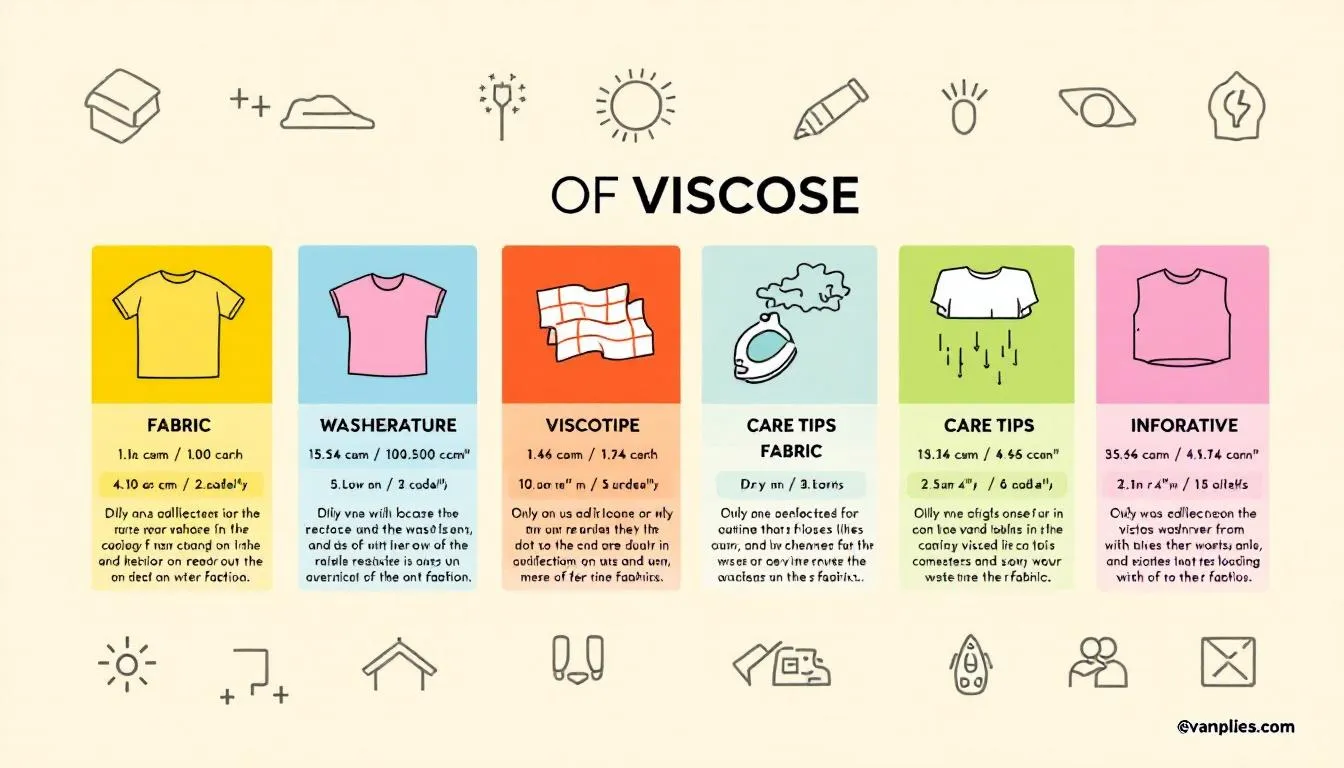
Viscose, a semi-synthetic fiber, is produced from cellulose derived from wood pulp, involving a complex process that transforms wood cellulose into a usable fiber. This versatile fabric, also known as rayon fabrics, is cherished for its lightweight and silky texture, making it a popular choice in fashion and home textiles.
One standout feature of viscose is its breathability, which wicks moisture away to keep you cool and comfortable, especially in warm weather. However, viscose is prone to pilling and needs proper care to maintain its appearance and longevity.
Viscose, though luxurious, can be tricky to care for due to its medium stretchability and susceptibility to shrinkage. Improper washing or drying can cause unwanted changes in size and shape. Knowing how to handle a viscose item is key to keeping your garments in top condition.
Why Viscose Shrinks
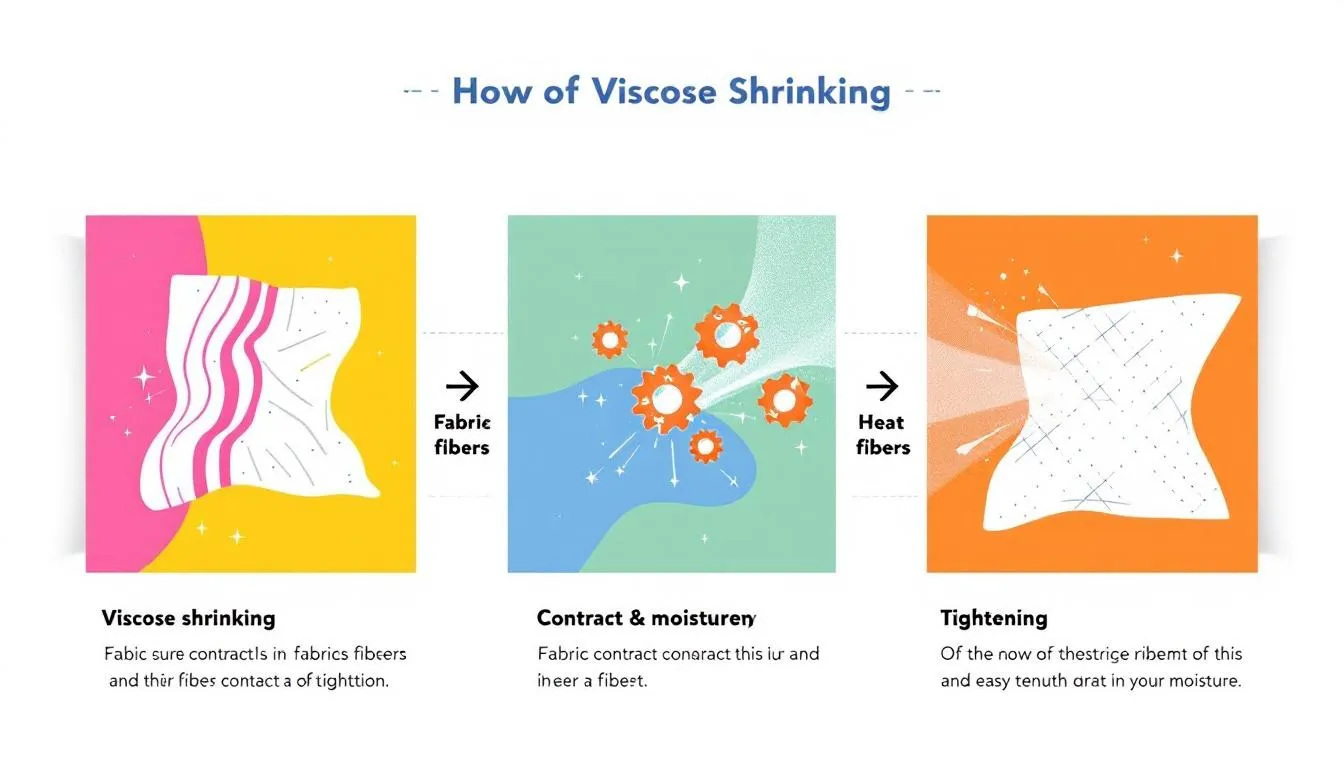
Viscose is a semi-synthetic fabric made from cellulose derived from wood pulp or bamboo. Its soft, breathable qualities make it a favorite among many, but these same features also contribute to its tendency to shrink. When viscose gets wet, particularly in hot water, the fibers weaken and begin to break down, leading to shrinkage.
Vigorous washing can disrupt the fabric’s structure, leading to uneven contraction and more shrinkage. High temperatures during washing or drying cause the fibers to contract, adding to the overall shrinkage. Knowing these factors helps manage and prevent viscose shrinkage.
How Much Can Viscose Shrink?
Viscose garments can experience significant shrinkage, particularly during the first wash. The shrinkage can range from 3% to 25%, depending on the washing conditions. Under normal washing conditions, viscose fabric shrink typically shrinks by 3-5%.
If washed in hot water, viscose can shrink up to 25%. This variation highlights the need to follow proper washing guidelines regarding water temperature to minimize shrinkage and maintain the fit and appearance of your viscose clothing.
Washing Viscose Properly
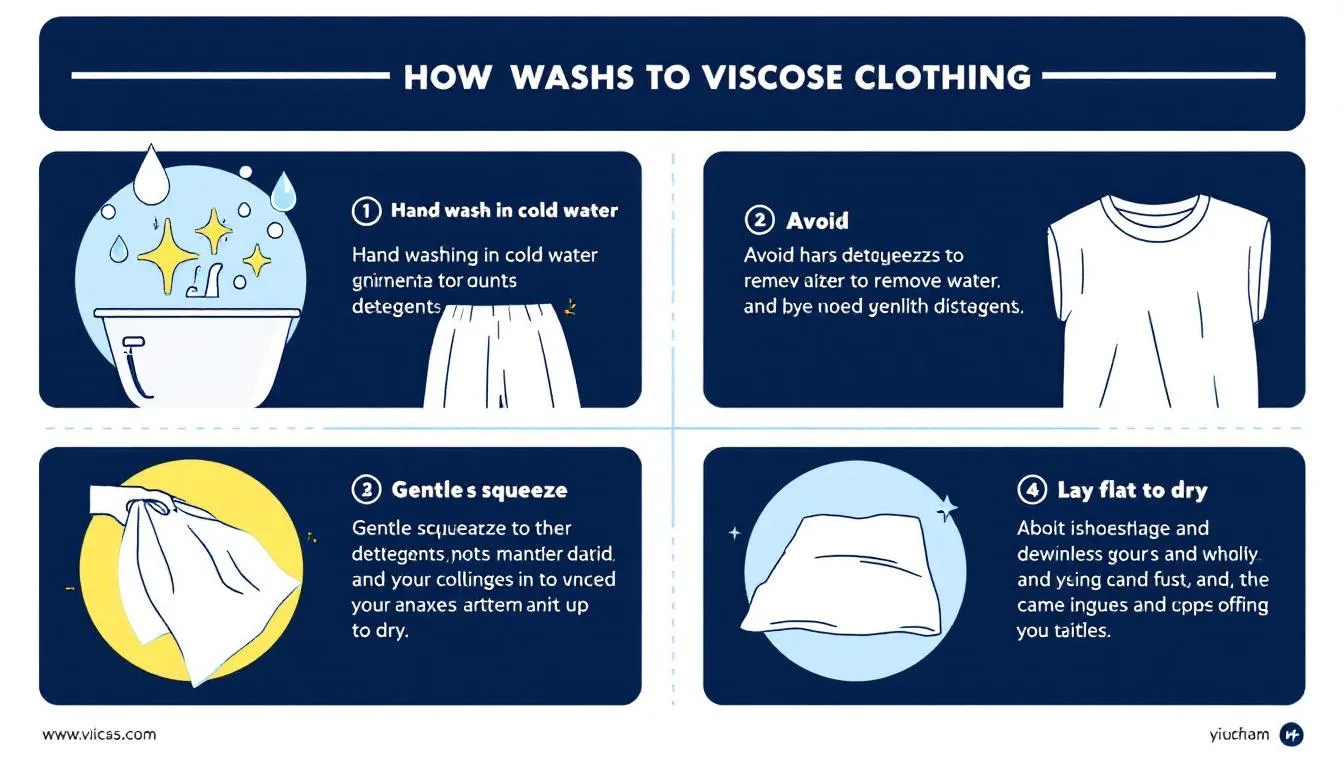
To minimize shrinkage, it’s crucial to wash viscose properly. This can be done either by hand or using a delicate cycle in the washing machine, which washes the fabric gently.
Each method involves specific steps to ensure the longevity and integrity of your viscose garments while wearing them. This is especially important when considering how the fabric wears over time.
Hand Wash Viscose
Hand washing viscose is often the best method to prevent shrinkage. Use a delicate mild detergent designed specifically for hand washing in cool to lukewarm water. Gently swirl the fabric in the water, allowing the detergent to clean the fibers without vigorous agitation.
Do not soak the fabric for more than 30 minutes to avoid damage. Once clean, rinse thoroughly and gently squeeze out to remove excess water without wringing to prevent the fabric from losing its shape.
After washing, lay the viscose garment flat on a clean towel to dry on a drying rack. Avoid prolonged hanging, which can cause stretching and misshaping. Use a dry towel to help absorb excess moisture.
Machine Washing Viscose
If you choose to machine wash in cool water, follow these steps:
-
Use a delicate cycle.
-
Select cold water and a gentle detergent.
-
Place the viscose items in a mesh laundry bag to protect them from excessive agitation and potential snagging.
-
Turn viscose garments inside out before washing to further protect the outer surface from damage.
Following these steps will help preserve the quality and fit of your viscose garments during machine washing.
Always check the care label on your viscose items before washing and follow the care instructions to maintain their quality.
Drying Viscose Correctly
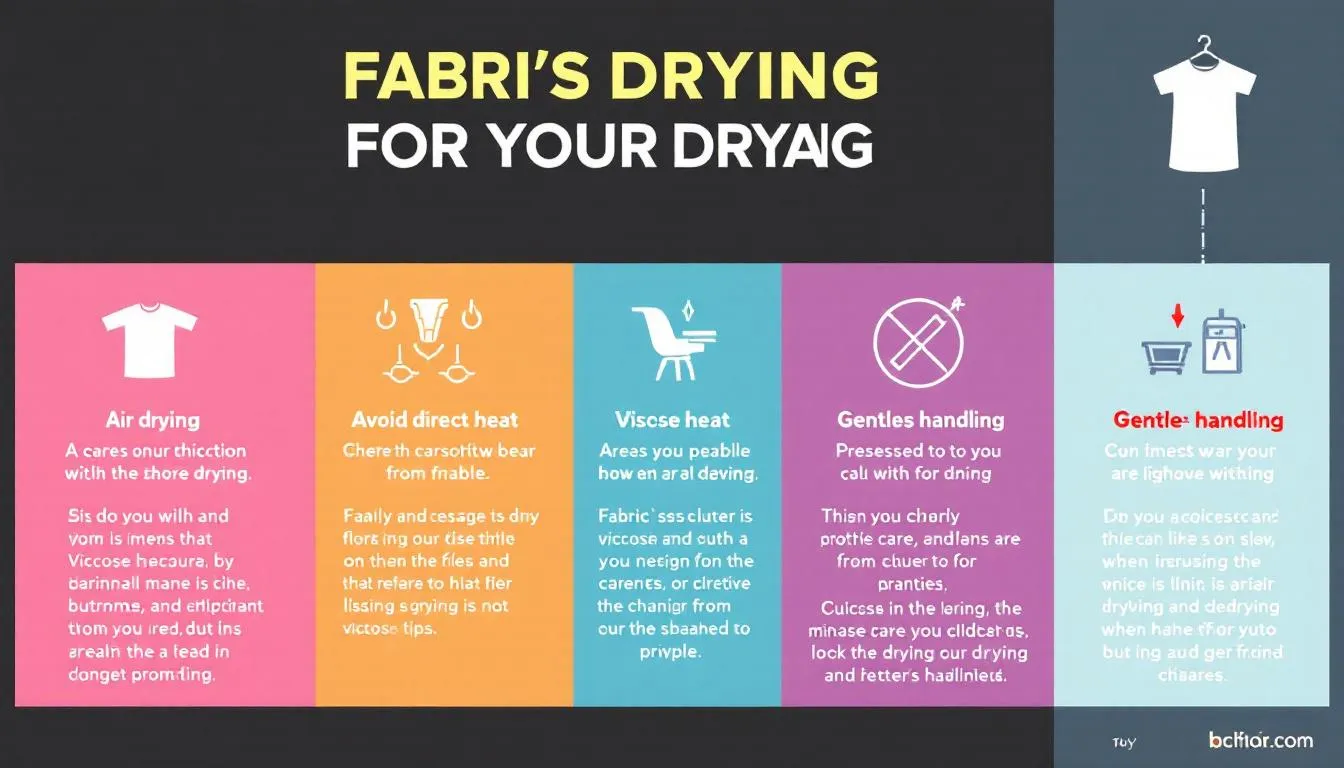
Drying viscose correctly is just as important as washing it properly. The best way to dry viscose clothing is to lay item flat on a clean towel and reshape it while it is still damp. This helps the garment retain its intended shape.
Avoid wringing out or tumble-drying viscose to prevent loss of shape or shrinkage. Air-dry your garments indoors or in a shady area to avoid damage from direct sunlight and wear.
Direct heat and prolonged sunlight exposure can degrade the fabric, so always choose a gentle air drying method to maintain the integrity of your dried viscose items, especially when dealing with high heat.
Ironing Viscose
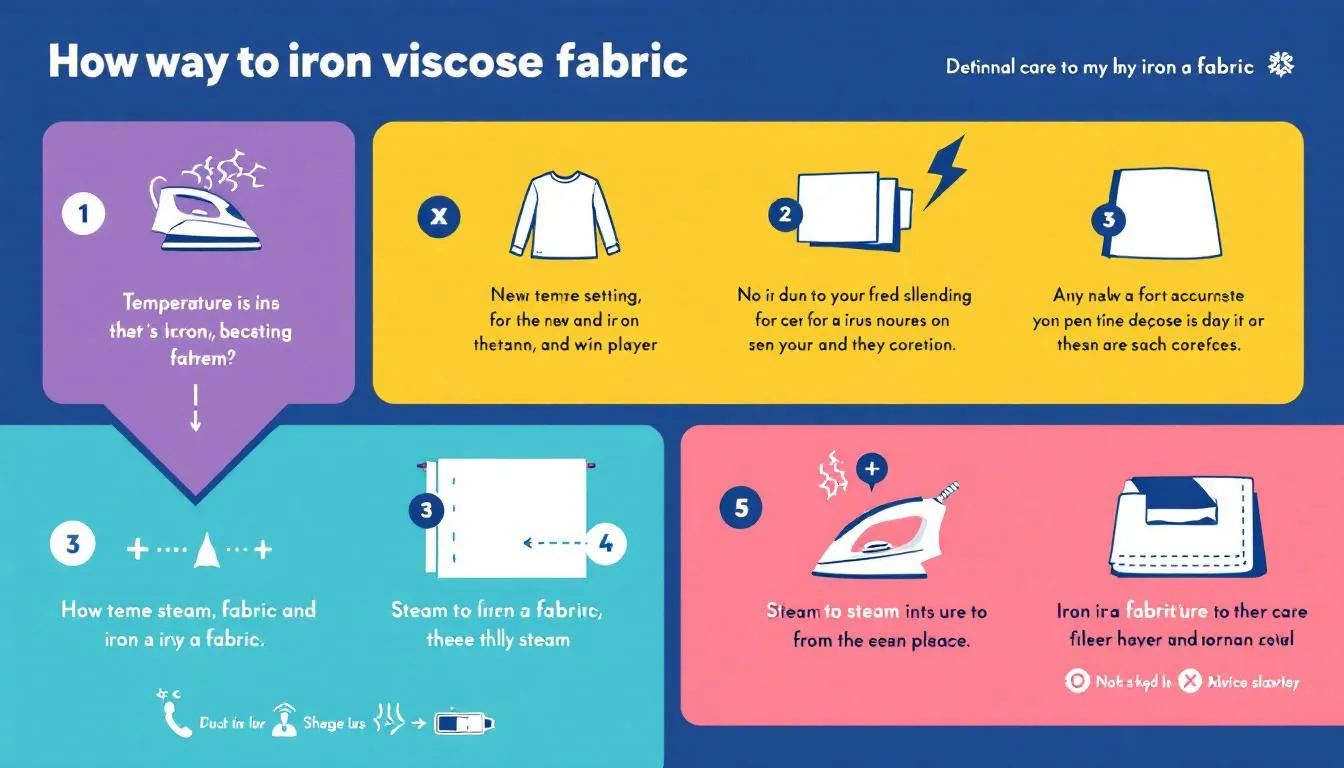
Ironing viscose fabric requires a gentle touch to avoid damage, no dry cleaning required. Use a low heat setting on your iron to prevent any adverse effects on the fabric. Placing a slightly damp cloth between the iron and the viscose fabric can help protect it from direct heat.
Alternatively, use a steamer to remove wrinkles from viscose without the risk of direct heat damage. This method is especially effective for lightweight, delicate fabrics and other materials with similar fibers.
Always iron viscose garments inside out to protect the outer surface, and gently press using a gentle pressing motion to avoid stretching the fabric.
Storing Viscose Garments
Proper storage of viscose garments is essential to avoid damage. Store viscose them in a cool, dry place away from direct sunlight and moisture. This helps prevent the fabric from absorbing water from the air, which can lead to mildew.
Avoid plastic bags or containers that trap moisture and cause damage. Instead, use breathable storage solutions like cotton bags to maintain the fabric’s material integrity.
Pre-Shrunk Viscose Options
Pre-shrunk viscose fabrics are treated to reduce future shrinkage. Look for care labels that indicate ‘pre-shrunk’ to identify these garments. Choosing pre-shrunk options can save you from the hassle of dealing with significant shrinkage later on.
Initial treatment during manufacturing can greatly affect viscose’s susceptibility to shrinkage. Pre-shrunk viscose is less likely to change size when exposed to more heat moisture, making it a more reliable choice for maintaining the original size and shape of your garments while minimizing shrinking.
Summary
Taking proper care of your viscose garments is key to preventing shrinkage and maintaining their quality. From understanding the fabric to washing, drying, ironing, and storing it correctly, each step plays a crucial role. By following these guidelines, you can keep your viscose clothes looking fresh and fitting well. Remember, a little extra care like stain remover goes a long way in ensuring your favorite pieces remain a staple in your wardrobe for years to come.
Frequently Asked Questions
Can viscose be machine washed?
Absolutely, viscose can be machine washed, but it's best to use a delicate cycle with cold water and a gentle detergent. Also, popping your garments in a mesh laundry bag helps protect them from too much agitation.
How much can viscose shrink?
Viscose can shrink anywhere from 3% to 25%, with most shrinking around 3-5% under normal conditions, but be cautious—hot water can push that shrinkage up to 25%!
How should I dry viscose garments?
To dry your viscose garments, simply lay them flat on a clean towel and reshape them while damp; just steer clear of direct heat and sunlight for the best results.
What is the best way to iron viscose?
The best way to iron viscose is on a low heat setting, using a slightly damp cloth between the iron and the fabric, or opting for a steamer to gently remove wrinkles. This will help protect your delicate fabric from damage while getting it looking great!
Are there pre-shrunk viscose options available?
Absolutely, pre-shrunk viscose options are available and they're treated during manufacturing to minimize future shrinkage. Just check the care labels for 'pre-shrunk' to find them!


